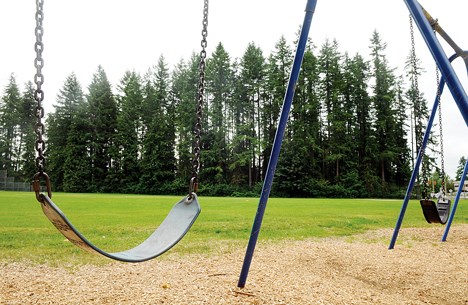An initiative that would put greater onus on real estate developers to help pay for parks and recreation facilities is being considered by the city of Coquitlam.
The Community Amenity Contribution (CAC) fund has already been piloted in the Burquitlam-Lougheed area but on Monday, council took the first step toward expanding the program city-wide.
“In the next 25 years, [the region] is going to absorb a million people,” said Mayor Richard Stewart. “We will have to meet their demand for housing and we are going to need to create neighbourhoods with amenities that support that population.”
If the expansion of the CAC program is approved by council, developers would contribute $3 per square foot for all new multi-family floorspace on top of the density that already exists on a parcel of land. Single-family home developers would be expected to contribute $5,500 for all lots greater than 375 sq. m while smaller parcels would pay $4,800.
Staff estimate the program would raise $3.4 million annually, or approximately $103 million for new parks and civic facilities over the next 30 years.
PRICE IMPACT CONCERNS
By comparison, the city’s parks and recreation master plan is expected to cost between $300 million and $350 million over the same time period.
“You have to fund the cost of development through development,” Stewart said. “Or else you fund the cost of development by taxing everyone else who lives in the community... They have already paid.”
But not everyone on council was supportive of expanding the CAC program. Coun. Brent Asmundson spoke against the initiative, questioning whether the city had the authority under provincial legislation to charge fees other than development cost charges.
Planning and development general manager Jim McIntyre said CACs are contributions — not payments — and that a municipality cannot legally force a developer to pay. But he told The Tri-City News that the city has some latitude when it comes to compelling a proponent to contribute, noting that “council is not obligated to approve every re-zoning.”
McIntyre said that the uptake has been 100% in the Burquitlam-Lougheed neighbourhood and that most developers prefer the fixed rate rather than the one-off negotiations that are sometimes seen in other municipalities.
Coun. Terry O’Neill expressed concerns over the impact CACs could have on housing affordability.
He questioned a city of Vancouver report that said the contributions do not affect real estate prices, saying the study was conducted by a consultant, not an economist.
Stewart countered O’Neill’s claim, saying housing is already priced at what the market will pay, not at its input costs. He added that good amenities are necessary to support high-density developments, which the region will require if it is going to keep housing prices down.
If CACs do cause real estate prices to rise, the increase would be marginal based on estimates included in a Coquitlam city staff report.
The document noted that for single-family homes, the price to build per square foot wold rise 0.4%, from $225 to $226, while the per-square foot construction costs for townhouses would rise 1.5%, from $195 to $198. A four-storey wood-frame building would see a 1% increase from $295 to $298 while 16- to 22-storey structures would increase 0.8% from $365 to $368 per square foot.
Staff will begin consulting with members of the public and the development industry, and are expected to report back to council in the new year.



